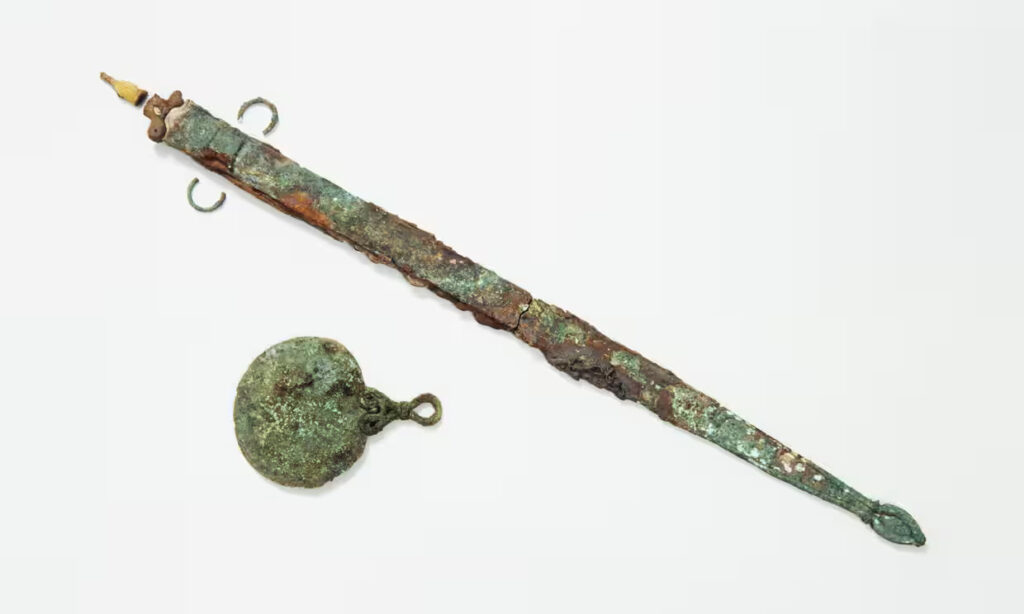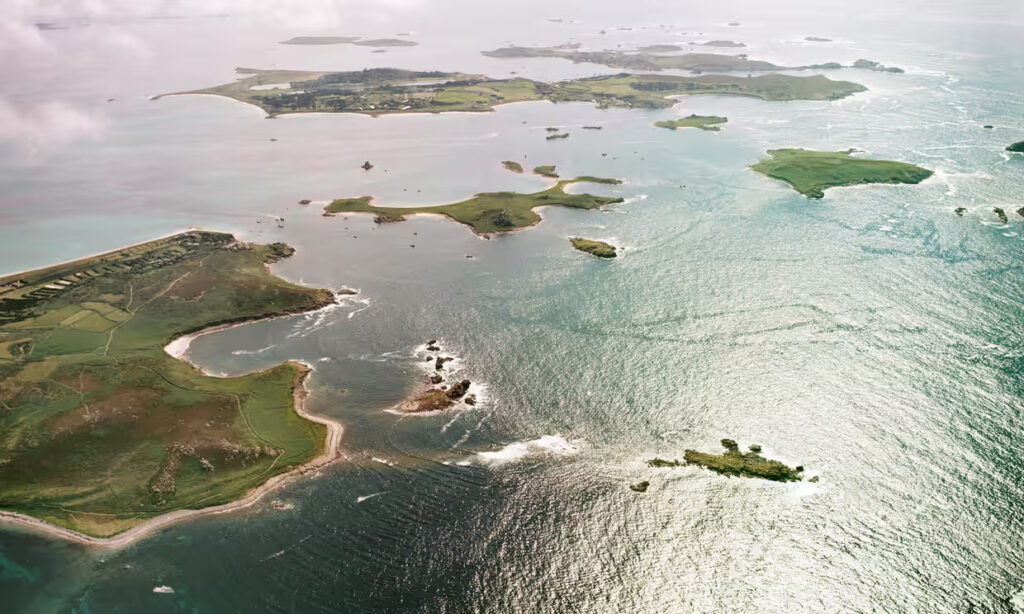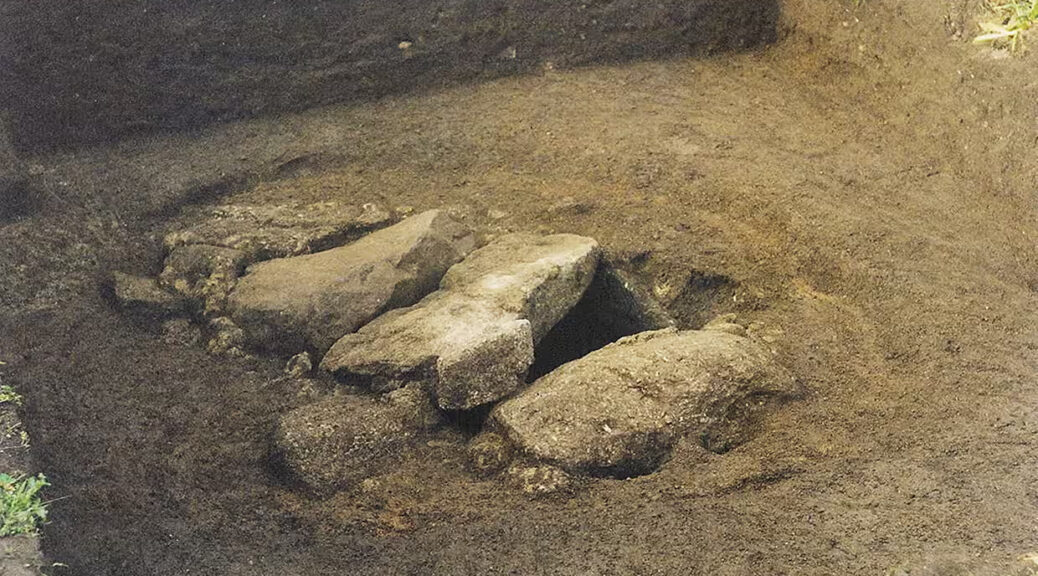Tooth Enamel Analysis Offers Clue to the Identity of Iron Age Warrior
DNA analysis of tooth enamel solves puzzle of 2,000-year-old grave on Bryher also containing sword and mirror.

Scientists have solved the mystery of a 2,000-year-old grave on the Isles of Scilly, raising intriguing questions about warfare in iron age Britain.
For decades archaeologists have puzzled over whether the stone-lined burial chamber, which was discovered in 1999 on Bryher, contained the remains of a man or a woman.
Excavations revealed a sword in a copper alloy scabbard and a shield alongside the remains of the sole individual, objects commonly associated with men. But a brooch and a bronze mirror, adorned with what appears to be a sun disc motif and usually associated with women, were also found. The grave is unique in iron age western Europe for containing both a mirror and a sword.

Now a scientific study led by Historic England has determined the remains are that of a woman, a discovery that could shed light on the role of female warriors during a period in which violence between communities is thought to have been a fact of life.
Original attempts to establish sex by traditional methods, such as DNA analysis, failed because of the disintegration of the bones. All that could be seen of the skeleton was a dark soil stain where the body had once lain, with only small pieces of bone and teeth amounting to about 150g recovered.

Scientific advances, in particular the development of a sophisticated technique at the University of California, Davis, meant it was possible to test tooth enamel, according to research findings published in the Journal of Archaeological Science: Reports.
Dr Glendon Parker, an adjunct associate professor in the department of environmental toxicology at UC Davis, said: “Tooth enamel is the hardest and most durable substance in the human body. It contains a protein with links to either the X or Y chromosome, which means it can be used to determine sex.
This is useful because this protein survives well compared to DNA.
“Our analysis involved extracting traces of proteins from tiny pieces of the surviving tooth enamel. This allowed us to calculate a 96% probability that the individual was female.”
The main form of warfare 2,000 years ago is likely to have been raids – surprise attacks – on enemy settlements. The mirror and weapons found in the grave are all associated with warfare.
It is thought that mirrors may have be used in the iron age for signalling, communicating and coordinating attacks. They also had ritualistic functions, as a tool to communicate with the supernatural world to ensure the success of a raid or “cleanse” warriors on their return.

Dr Sarah Stark, a human skeletal biologist at Historic England, said the findings provided “evidence of a leading role for a woman in warfare on iron age Scilly.
“Although we can never know completely about the symbolism of objects found in graves, the combination of a sword and a mirror suggests this woman had high status within her community and may have played a commanding role in local warfare, organising or leading raids on rival groups.”
Stark added: “This could suggest that female involvement in raiding and other types of violence was more common in iron age society than we’ve previously thought, and it could have laid the foundations from which leaders like Boudicca would later emerge.”
The Bryher sword and mirror are on display at the Isles of Scilly Museum.
